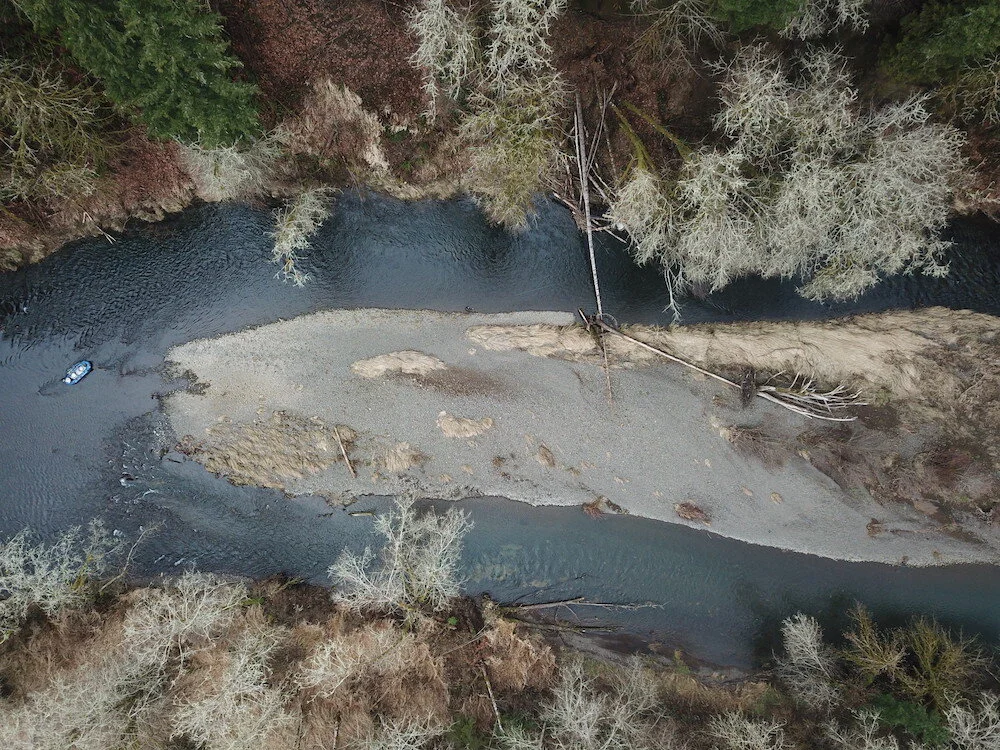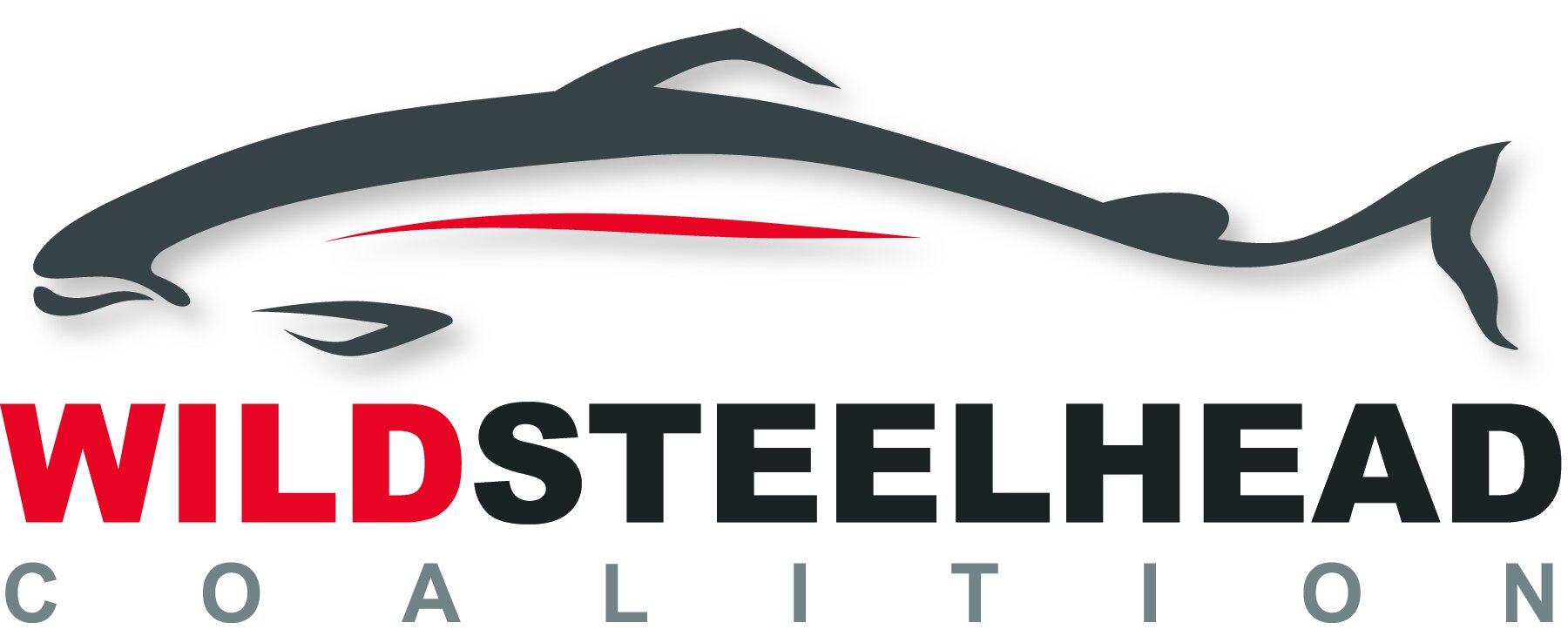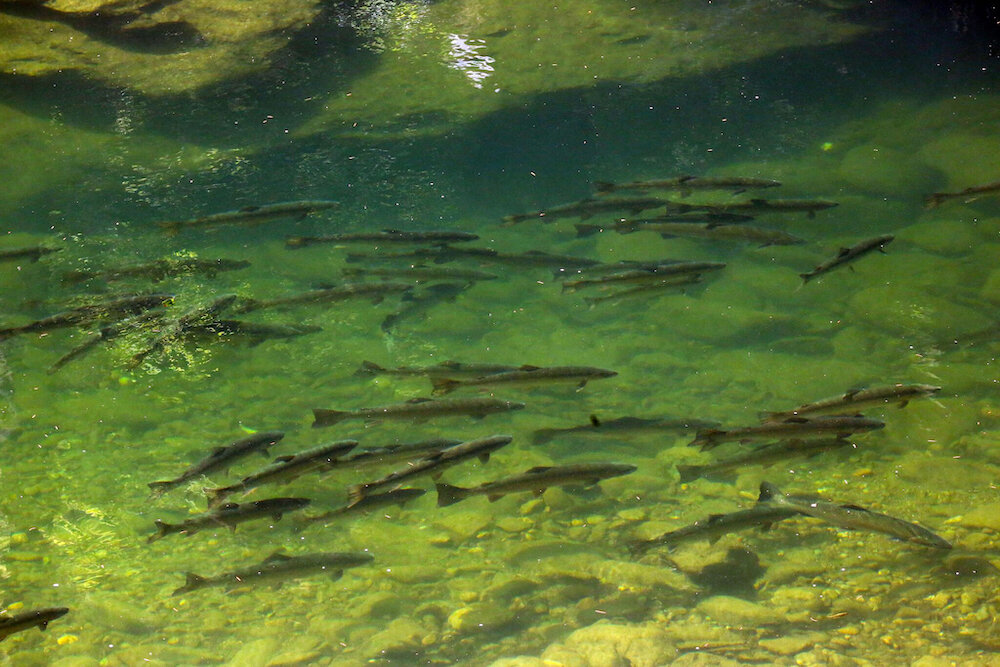
Arteries to the Pacific
Steelhead habitat spans thousands of river miles throughout their native range and varies from short, coastal watersheds to the high elevation rivers of the Western Rockies. These rivers flow through rainforests, boreal forest, tundra, and high deserts. Some rivers support both winter and summer steelhead, while others only support one or the other. Steelhead habitat overlaps with that of salmon, trout, lamprey, and other coldwater species native to the watersheds connected to the Pacific Ocean.
To thrive, steelhead require intact watersheds with healthy spawning and rearing habitat and stable sources of cold, clean water. A high-functioning watershed will have stable spawning gravels, off-channel habitat and beaver ponds for juvenile overwintering, as well as healthy estuaries and near-shore habitats. Where wild steelhead are flourishing all of these factors are present and upstream migration of returning adults and downstream migration of smolts is unimpeded by dams.
“To thrive, steelhead and salmon require intact watersheds with healthy spawning and rearing habitat and stable sources of cold, clean water.”
Changes to Habitat
Throughout wild steelhead’s range, human activities have dramatically compromised habitat, which has made our watersheds less able to support healthy runs of wild steelhead. Irresponsible logging, mining, and overgrazing are particularly pernicious problems as they destabilize stream banks, increase sedimentation on crucial spawning gravels, and deprive rivers of the vital woody debris juvenile steelhead require. Land clearing for agriculture and urbanization also pose major issues as they change how water is infiltrated and drained throughout river systems, thereby increasing pollution, heightening the frequency of destructive flooding, and exacerbating severe summer periods of low flows.
Draining adjacent wetlands and upriver beaver ponds, channelization, and dike construction have also taken a heavy toll on watersheds by reducing the diversity of habitat types and depriving juvenile steelhead of rearing habitat. Dredging and seawall construction done to facilitate development has kept rivers from utilizing their entire floodplain and displaced estuaries, which provide important habitat for juvenile fish.
In Puget Sound alone, more than 80% of historic estuary habitat has been lost to development and agriculture. The loss of habitat from development highlights the immense value of habitat located in federally and state protected areas such as Olympic National Park and the Frank Church Wilderness, which are home to some of the best remaining steelhead habitat on the planet.
Restoration
Despite widespread recognition of the importance of salmonid habitat, threats to healthy freshwater and marine habitats continue to mount where cities and agriculture are expanding, new dams are being proposed, and climate change is affecting ecosystem function. However, in many places, habitat is being restored due to improved environmental regulation and tireless efforts to protect and recover watershed habitat. With dedication and broad coalitions of stakeholders, we can build on this momentum and work together to protect the remaining intact habitat and restore damaged watersheds.
Dam removal offers a strong beacon of hope for habitat restoration. In Washington, dam removals on the Elwha and White Salmon Rivers have allowed steelhead to access spawning and rearing habitat that had been blocked for nearly a century. Similarly, dam removal projects on the Nooksack, Pilchuck, and Yakima Rivers will allow access to previously blocked habitat in the coming years. Not to mention, the pending dam removal in California’s Klamath Basin, which would be the largest steelhead and salmon habitat restoration project in the world.
Beyond dam removal, habitat restoration efforts in watersheds like the Chehalis and Skagit offer prime opportunities to recover wild steelhead. The WSC has been involved in these efforts both in the form of advocating for Washington State to allocate funds for the Chehalis Aquatic Species Restoration Plan as well as by directly working to fund restoration on the Skagit’s Barnaby Slough.
Against all odds, wild steelhead persist despite this tremendous loss of habitat. It speaks to the resiliency of these amazing creatures, and the opportunities for steelhead recovery if we can ensure healthy habitat for generations to come.






